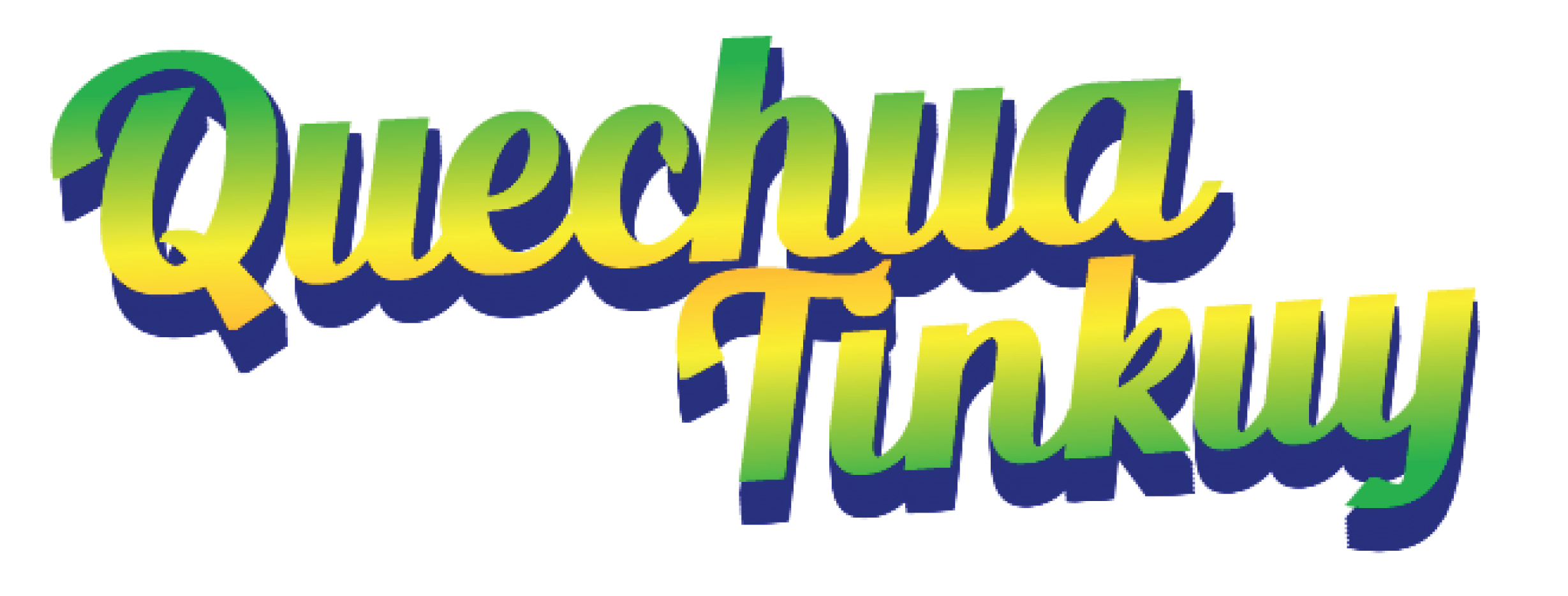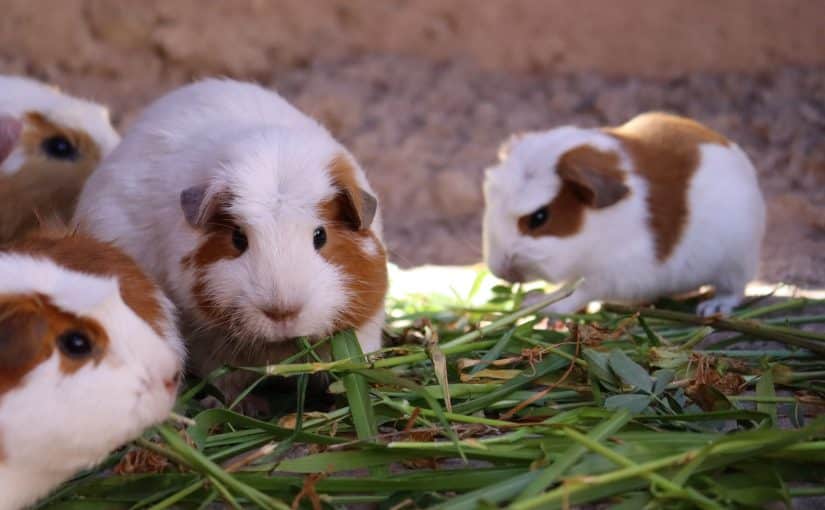
Qallarinapaq | Introduction
In this unit we will learn to count and write numbers in Quechua. Remember that the expression 'Runasimipi Yupasun' has the following connotation:
| RUNASIMIPI | YUPASUN |
|---|---|
| 'Runasimi' is another name for Quechua that means runa – people, simi – language. A translation to English would be language of the people. | The word «Yupasun» comes from the verb 'yupay' that means to count. In this case it refers to numbers. |
Quechua numbers 0 to 10:
| 0 | Ch’usaq |
| 1 | Huq |
| 2 | Iskay |
| 3 | Kimsa |
| 4 | Tawa |
| 5 | Pichqa |
| 6 | Suqta |
| 7 | Qanchis |
| 8 | Pusaq |
| 9 | Isqun |
| 10 | Chunka |
Throughout this unit we will learn to count bigger numbers, as well as ordinal numbers and we will finish with some practice.
¡Qallarisun! (Let's get started!)

Qillqa | Grammar
We will begin counting Quechua numbers larger than 10 in groups of 10: from 11 to 20, from 21 to 30, and so on until we arrive at 100,000 (one hundred thousand). Pay attention to the repeated words in the tens and hundreds groups.
Numbers from 10 to 20:
| 10 | Chunka |
| 11 | Chunka huqniyuq |
| 12 | Chunka iskayniyuq |
| 13 | Chunka kimsayuq |
| 14 | Chunka tawayuq |
| 15 | Chunka pichqayuq |
| 16 | Chunka suqtayuq |
| 17 | Chunka qanchisniyuq |
| 18 | Chunka pusaqniyuq |
| 19 | Chunka isqunniyuq |
| 20 | Iskay chunka |
Notice the following pattern in numbers greater than 10:
1 is huq 10 is chunka so 11 is chunka huqniyuq
2 is iskay 10 is chunka so 12 is chunka iskayniyuq
3 is kimsa 10 is chunka so 13 is chunka kimsayu
4 is tawa 14 is chunka so 14 is chunka tawayuq
Easy, right? We have combined both numbers 1 and 10, and so on. At the end we have added YUQ (if the word ends in a vowel) and NIYUQ (if the word ends in a consonant), let's look at more examples with numbers from 20 to 100 and you will notice the same pattern.
Quechua numbers 20 to 100:
| 20 | Iskay chunka |
| 21 | Iskay chunka huqniyuq |
| 22 | Iskay chunka iskayniyuq |
| 23 | Iskay chunka kimsayuq |
| 24 | Iskay chunka tawayuq |
| 25 | Iskay chunka pichqayuq |
| 26 | Iskay chunka suqtayuq |
| 27 | Iskay chunka qanchisniyuq |
| 28 | Iskay chunka pusaqniyuq |
| 29 | Iskay chunka isqunniyuq |
| 30 | Kimsa chunka |
| 30 | Kimsa chunka |
| 31 | Kimsa chunka huqniyuq |
| 32 | Kimsa chunka iskayniyuq |
| 33 | Kimsa chunka kimsayuq |
| 34 | Kimsa chunka tawayuq |
| 35 | Kimsa chunka pichqayuq |
| 36 | Kimsa chunka suqtayuq |
| 37 | Kimsa chunka qanchisniyuq |
| 38 | Kimsa chunka pusaqniyuq |
| 39 | Kimsa chunka isqunniyuq |
| 40 | Tawa chunka |
| 40 | Tawa chunka |
| 41 | Tawa chunka huqniyuq |
| 42 | Tawa chunka iskayniyuq |
| 43 | Tawa chunka kimsayuq |
| 44 | Tawa chunka tawayuq |
| 45 | Tawa chunka pichqayuq |
| 46 | Tawa chunka suqtayuq |
| 47 | Tawa chunka qanchisniyuq |
| 48 | Tawa chunka pusaqniyuq |
| 49 | Tawa chunka isqunniyuq |
| 50 | Pichqa chunka |
It's not complicated, right? We have noted the following:
*5 is pichqa 10 is chunka 15 is chunka pichqayuq so 50 is pichqa chunka.
| 50 | Pichqa chunka |
| 51 | Pichqa chunka huqniyuq |
| 52 | Pichqa chunka iskayniyuq |
| 53 | Pichqa chunka kimsayuq |
| 54 | Pichqa chunka tawayuq |
| 55 | Pichqa chunka pichqayuq |
| 56 | Pichqa chunka suqtayuq |
| 57 | Pichqa chunka qanchisniyuq |
| 58 | Pichqa chunka pusaqniyuq |
| 59 | Pichqa chunka isqunniyuq |
| 60 | Suqta chunka |
*6 is suqta 10 is chunka 16 is chunka suqtayuq so 60 is suqta chunka.
| 60 | Suqta chunka |
| 61 | Suqta chunka huqniyuq |
| 62 | Suqta chunka iskayniyuq |
| 63 | Suqta chunka kimsayuq |
| 64 | Suqta chunka tawayuq |
| 65 | Suqta chunka pichqayuq |
| 66 | Suqta chunka suqtayuq |
| 67 | Suqta chunka qanchisniyuq |
| 68 | Suqta chunka pusaqniyuq |
| 69 | Suqta chunka isqunniyuq |
| 70 | Qanchis chunka |
*7 is qanchis 10 is chunka 17 is chunka qanchisniyuq so 70 is qanchis chunka.
| 70 | Qanchis chunka |
| 71 | Qanchis chunka huqniyuq |
| 72 | Qanchis chunka iskayniyuq |
| .. | (follows the same pattern as previous groups). |
| 80 | Pusaq chunka |
*8 is pusaq 10 is chunka 18 is chunka pusaqniyuq so 80 is pusaq chunka.
| 80 | Pusaq chunka |
| 81 | Pusaq chunka huqniyuq |
| 82 | Pusaq chunka iskayniyuq |
| .. | (follows the same pattern as previous groups). |
| 90 | Isqun chunka |
*9 is isqun 10 is chunka 19 is chunka isqunniyuq so 90 is isqun chunka.
| 90 | Isqun chunka |
| 91 | Isqun chunka huqniyuq |
| 92 | Isqun chunka iskayniyuq |
| .. | (follows the same pattern as previous groups). |
| 100 | Pachak |
Quechua numbers from 100 to 1000:
We will continue learning to count and write numbers in Quechua. Here we will follow the same pattern as previous groups (to talk about adding the units huq, iskay, kimsa, and so on) and we will ad the word PACHAK which means 100.
Let's look at some examples:
*1 is huq 100 is pachak
*2 is iskay 200 is iskay pachak
*3 is kimsa 300 is kimsa pachak and so on
| 100 | Pachak |
| 200 | Iskay pachak |
| 300 | Isqun pachak |
| 400 | Tawa pachak |
| 500 | Pichqa pachak |
| 600 | Suqta pachak |
| 700 | Qanchis pachak |
| 800 | Pusaq pachak |
| 900 | Isqun pachak |
| 1000 | Waranqa |
Quechua numbers 1000 (thousand) to 10,000 (ten thousand):
In this group we will continue with the units huq, iskay, kimsa and so on, and at the end we will add the word WARANQA which means 1000 (thousand).
| 1000 | Waranqa |
| 2000 | Iskay waranqa |
| 3000 | Kimsa waranqa |
| 4000 | Tawa waranqa |
| 5000 | Pichqa waranqa |
| 6000 | Suqta waranqa |
| 7000 | Qanchis waranqa |
| 8000 | Pusaq waranqa |
| 9000 | Isqun waranqa |
| 10000 | Chunka waranqa |
Quechua numbers up to 1,000,000 (a million):
Now that we know how to count numbers in Quechua, we will practice with bigger numbers.
*1 is huq 10 is chunka 1000 (thousand) is waranqa 10 000 (ten thousand) is chunka waranqa
*2 es iskay 10 es chunka 2000 es iskay waranqa 20 000 (20 mil) es iskay chunka waranqa (y así sucesivamente).
| 10 000 | Chunka waranqa |
| 20 000 | Iskay chunka waranqa |
| 30 000 | Kimsa chunka waranqa |
| 40 000 | Tawa chunka waranqa |
| 50 000 | Pichqa chunka waranqa |
| 60 000 | Suqta chunka waranqa |
| 70 000 | Qanchis chunka waranqa |
| 80 000 | Pusaq chunka waranqa |
| 90 000 | Isqun chunka waranqa |
| 100 000 (one hundred thousand) | Pachak waranqa |
| 200 000 | Iskay pachak waranqa |
| 500 000 | Pichqa pachak waranqa |
| 700 000 | Qanchis pachak waranqa |
| 900 000 | Isqun pachak waranqa |
| 1 000 000 (one million) | Hunu |
Ordinal numbers
Now that you know the numbers in Quechua, we will look at how to form ordinal numbers from 1 to 10:
| 1ro | First | Ñaupaq kaq |
| 2do | Second | Iskay kaq |
| 3ro | Third | Kimsa kaq |
| 4to | Fourth | Tawa kaq |
| 5to | Fifth | Pichqa kaq |
| 6to | Sixth | Suqta kaq |
| 7mo | Seventh | Qanchis kaq |
| 8vo | Eighth | Pusaq kaq |
| 9no | Ninth | Isqun kaq |
| 10mo | Tenth | Chunka kaq |

Rimanakuna | Vocabulary
Keep in mind the following vocabulary that will also help you in future units:
| Runasimi | Language of the people |
| Runa | person |
| Yupay | to count |
| Warmi | woman |
| Quwi | guinea pig |
| Capi | kid, young goat |
| Kuchi | pig |
| Uyway | to raise |
| Michiy | to graze |
| Chucllo | corn cob/fresh corn |

Ruwapakuy | Exercises
It is the moment to put what you have learned in this unit into practice. Since we are learning to count in Quechua, it is necessary to learn the plural marker.
Remember that the marker for plural in Quechua is: KUNA.
For example:
One singular woman would be: huq warmi
More than one woman would be: warmikuna
Let's look at more examples in the following table:
| SINGULAR | PLURAL |
| Llama | Llamakuna |
| Runa | Runakuna |
| Wasi | Wasikuna |
| T’ika | T’ikakuna |
| Sara | Sarakuna |
Keep in mind that in Quechua there is not opposition between singular and plural. When a sentence that has more than one subject and does not have the pluralizer – kuna it doesn't mean that it is not plural.
For example:
- Tawa quwi is the same as Tawa quwikuna. both mean four guinea pigs.
- Iskay runa is the same as Iskay runakuna. Both mean teo people.
In certain sentences, the plural marker is superfluous.
For example, in the phrase wakata michini (I graze the cows). This phrase could also be wakakunata michini which means the same thing.
Here are some more examples:
Capita Curahuasipi michini is the same as Capikunata Curahuasipi michini. Both mean «I graze young goats in Curahuasi».
Kuchita Urubambapi uywani is the same as Kuchikunata Urubambapi uywani. Both mean «I raise pigs in Urubamba».
Exercise:
Carefully observe each of the images and in your notebook write the number (in Quechua) of people, animals, o objects that are shown, as well as the pluralizer kuna.
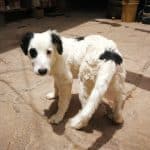
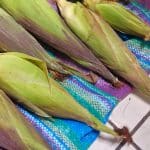
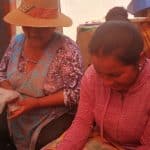
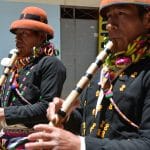
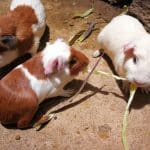
After completing this exercise, check your answers by clicking on the play icon and repeat each phrase out loud.
Answers
a) Huq alqu
b) Suqta chuqllukuna
c) Iskay warmikuna
d) Iskay runakuna
e) Kimsa quwikuna
